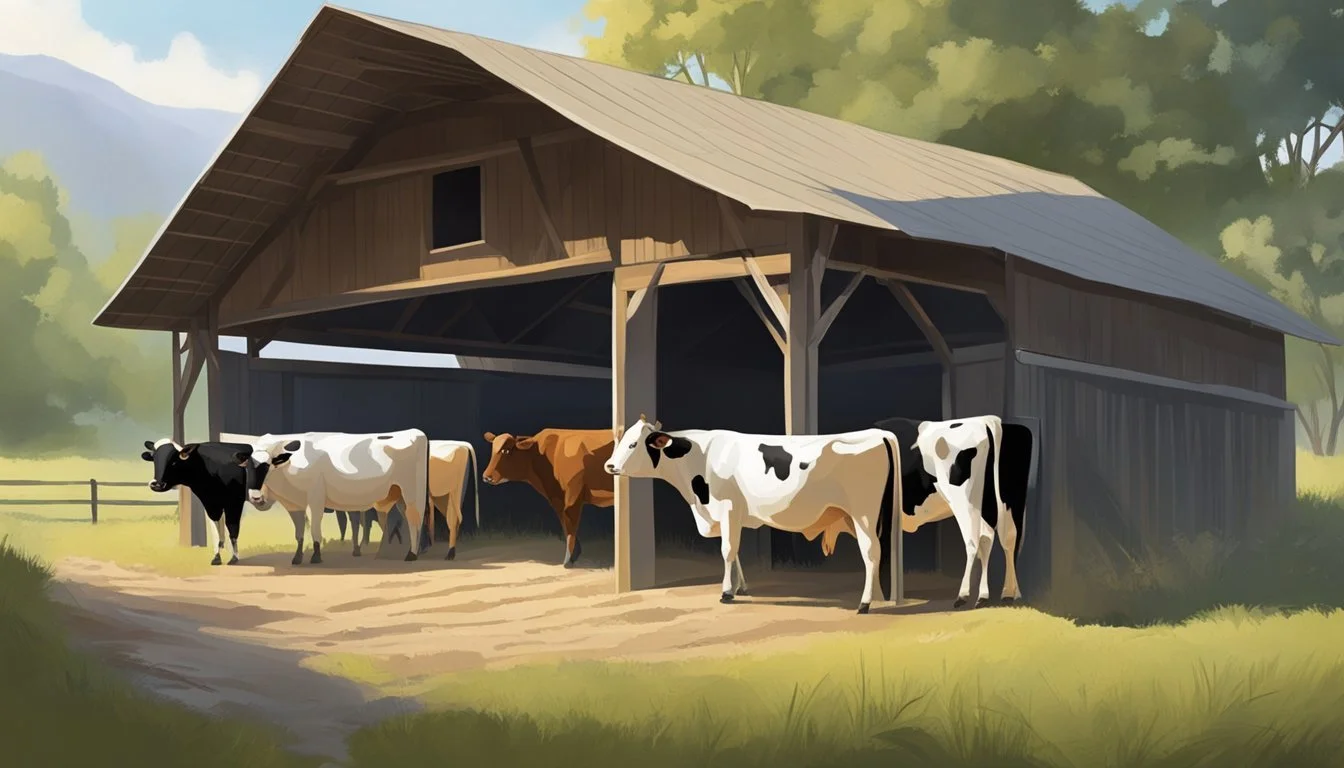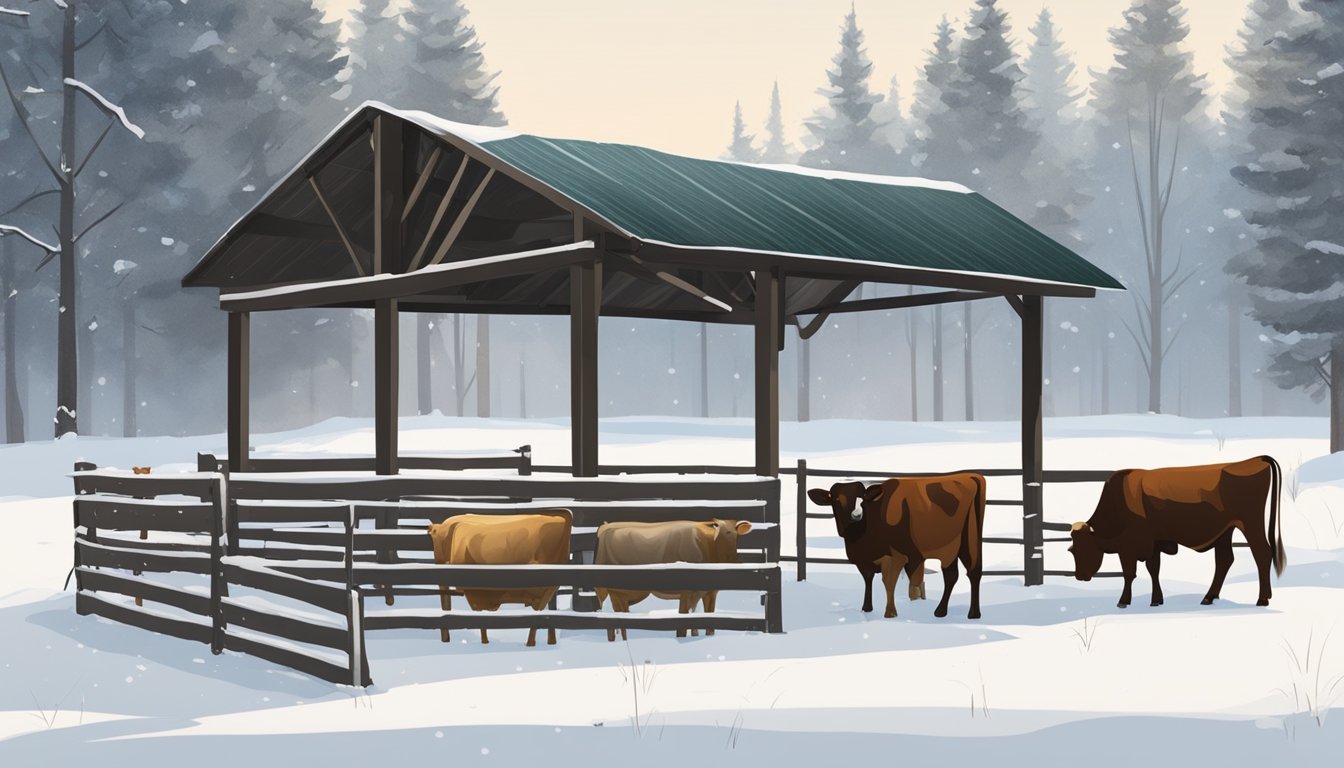How do I provide adequate shelter for my cattle
Essential Tips for Bovine Wellbeing
Providing adequate shelter for cattle is a critical aspect of ensuring their welfare and maximizing their productivity. Cattle shelters serve multiple purposes; they protect the animals from extreme weather conditions, be it scorching summer heat or freezing winter cold. Adequate shelters also contribute to disease prevention by offering a dry and clean environment, reducing the stress levels among the cattle which can otherwise impact their health adversely.
When considering the construction or provision of shelter for cattle, several key factors must be taken into account. Space availability is essential, as it directly influences the cattle's comfort and their ability to move freely and exercise. Water access is another crucial component of a good cattle shelter because hydration plays a pivotal role in the animals' overall health. Environmental considerations, such as ensuring proper ventilation and manure management, are also vital to maintain a healthy shelter environment.
In terms of animal welfare, cattle housing should not only provide protection from environmental elements but also support the natural behaviors and needs of the cattle. This includes considering the social nature of these animals, making provisions for them to interact with each other in a safe and accommodating space. By integrating these elements of shelter, space, water access, and environmental management, cattle can thrive and contribute effectively to agricultural productivity.
Understanding Basic Cattle Needs
Providing proper care to cattle involves meeting their essential requirements including adequate shelter, appropriate nutrition, and constant access to water. These elements are crucial for maintaining animal health and ensuring cattle are protected from adverse weather conditions.
Shelter Requirements
Cattle require shelter to protect them from extreme temperatures, wind, rain, and snow. An ideal cattle shelter should offer:
Ventilation: Prevent respiratory issues with good airflow
Dry bedding: Keep cattle clean and dry to prevent health problems
Ample space: Enough room to move, lie down, and stand without restrictions
Protection from adverse weather: Structure or natural landscape that shields them from the elements.
Proper sheltering provides protection and a stress-free environment conducive to their well-being.
Nutrition Fundamentals
The fundamentals of cattle nutrition focus on a balanced diet that meets their energy requirements. Cattle diets generally consist of:
Roughages: These provide fiber, protein, and energy and should constitute 60-80% of the diet.
Grains and Concentrates: Such as corn and oats offer additional calories for growth and lactation.
Implementing proper feed intake principles is essential to supply the necessary energy for maintenance, growth, and production.
Importance of Water Access
Access to clean water is non-negotiable for cattle as it is vital for their hydration and overall health. Key considerations include:
Continuous water access: Ensure cattle have constant access to fresh water.
Cleanliness: Regularly check and clean the water source to prevent disease.
Offering a reliable water setup can greatly influence cattle health, affecting feed intake and weight gain.
Shelter Design and Location
When constructing a shelter for cattle, priority must be given to environmental factors, structural design to provide optimal conditions, and careful selection of location to ensure the highest level of protection and comfort for the animals.
Assessing Environmental Factors
Environmental considerations play a crucial role in designing cattle shelters. A cattle farm must take into account regional climate, such as exposure to sun, prevailing winds, and rainfall patterns. Implementing shelterbelts, which are rows of trees or shrubs, can aid in protecting the livestock from harsh winds and can also enhance soil fertility by providing a barrier against soil erosion.
Structural Features for Optimal Shelter
The construction of cattle sheds requires attention to features that ensure the provision of dry, well-ventilated spaces. These shelters should have a ceiling high enough to facilitate air circulation, and incorporate insulation materials to moderate temperatures. Insulation is particularly important to shield cattle from extreme heat or cold. It's equally important to provide sufficient shade to protect the animals from direct sunlight.
Selecting the Right Site
The ideal site for a cattle shelter combines accessibility, protection, and effective pasture management. Choose a location that is elevated with good drainage to keep the area dry and prevent the accumulation of moisture and waste, which could lead to diseases. The site should offer access to a pasture with ample space for grazing, while also factoring in environmental protection and the long-term impact on soil fertility.
Seasonal Considerations for Cattle Care
Providing cattle with appropriate shelter throughout the year relies on recognizing the unique challenges each season presents. Cattle's health and productivity are dependent on how well they are protected from extreme temperatures and weather conditions.
Combatting Cold Stress
During the winter months, cattle require structures that can protect them from harsh winds and drifting snow. Insulation is key, as well-designed barns or windbreaks must offer a barrier against the cold while preventing moisture buildup inside the shelter. In cold climates, it is vital to consider the orientation of the shelter to minimize the impact of frigid gusts, and the use of bedding to maintain animals' core temperature.
Addressing Heat Stress
Conversely, in the summer, combating heat stress necessitates providing sufficient shade to protect cattle from direct sun. The use of a shade cloth in the pasture can help reduce exposure to solar radiation. Access to plenty of fresh water is also critical to help cattle regulate their body temperature. Airflow can be facilitated by open-sided shelters, ensuring that humidity doesn't escalate to dangerous levels indoors.
Dealing with Wet Conditions
Protection from rain and storms is a year-round concern, with wet conditions becoming particularly troublesome. Properly constructed shelters should offer a dry refuge from the rain, while good manure management practices mitigate health risks associated with dampness and pathogens. In areas prone to storms, structurally sound shelters are critical to safeguard the herd from potential injuries or stress.
Maintaining Animal Health and Welfare
Providing an environment that promotes cattle health and minimizes stress is critical for maintaining animal welfare standards and achieving optimal farm productivity.
Managing Herd Health
Herd health management is fundamental in ensuring cattle well-being. Farmers should implement a regular vet program that includes routine check-ups and preventive care. Monitoring the body condition of cattle helps in early detection of health issues.
Nutritional Supplementation
A tailored nutritional supplementation plan is essential to meet the specific needs of the herd. Incorporating minerals and Cargill Animal Nutrition products ensures that cattle receive a balanced diet, optimizing their health and productivity. Brands like Nutrena may offer feeds tailored to the animals' stage of life and condition.
Preventing Diseases and Parasites
Effective disease and parasite control includes regular vaccination and the strategic use of pharmaceuticals. Maintaining fly control and administering appropriate medication can reduce the incidence and spread of illnesses within the herd. A well-executed herd health program is instrumental in preventing diseases and protecting against infestation by external and internal parasites.
Managing Feed and Grazing Systems
Effective management of cattle feed and grazing systems is vital for maintaining animal health, optimizing nutrition, and enhancing productivity. Key strategies include a well-planned approach to pasture use, innovative feeding solutions, and tailored practices for dry lots and confinement areas.
Optimizing Pasture Management
When it comes to optimizing pasture management, implementing a system such as rotational grazing proves beneficial in sustaining forage quality and quantity. The focus is on controlled access to different paddocks, allowing pastures to recover before being grazed again. Effective pasture management includes:
Assessing Pasture Health: Regularly evaluating the condition of the pasture to maintain adequate forage mass and avoid overgrazing.
Water Access: Ensuring cattle have easy access to clean water sources such as troughs.
Fencing: Installing durable fencing to control grazing areas and movement effectively.
Feeding Solutions
Balanced nutrition for cattle is not solely reliant on pasture availability. Supplemental feeding strategies are often necessary, especially during the winter or dry seasons. Solutions include:
Feed Selection: Choosing the right type and mix of feed to fulfill nutritional requirements, considering factors such as calving cycles.
Feeders: Utilizing feeders, like round bale feeders, to minimize waste and maintain the cleanliness of feedstuffs.
Special Considerations for Dry Lots and Confinement
For cattle housed in dry lots or confinement, special considerations are necessary to ensure their well-being and productivity. Key practices include:
Shelter: Providing adequate shelter to protect cattle from harsh weather conditions.
Space: Preventing overcrowding by allocating sufficient space per animal within corrals or confinement areas to promote good health and reduce stress.
Infrastructure for Cattle Shelter and Management
Providing adequate shelter for cattle is essential for their health and productivity. Well-designed infrastructure is key, from robust fencing to efficient watering systems and climate protection measures.
Building Effective Fencing and Enclosures
Effective fencing is crucial for cattle management, serving to contain animals within designated areas and protect them from predators. Electric fences are popular for their effectiveness and flexibility; they can be moved as required for rotational grazing strategies. Confinement areas require sturdy materials to withstand cattle pressure and environmental elements. It is not only about containment but also about providing a safe and secure area for the livestock to inhabit.
Materials: Use durable materials like metal t-posts and wooden posts.
Layout: Design paddocks to facilitate easy movement of cattle between grazing areas.
Watering Systems and Troughs
Cattle's hydration needs are non-negotiable, and proper watering systems ensure that hydration is met consistently. To prevent dehydration, which can lead to health issues, troughs should be strategically placed so cattle have access to water at all times. Automating water delivery can save labor and ensure a continuous supply.
Example of a Watering System Setup:
Water source: Natural or artificial, with sufficient capacity.
Pipes and Dispensers: Durable and capable of withstanding cattle interaction.
Creating Wind Breaks and Sun Protection
Protection from the elements is critical for cattle welfare. A natural or artificial wind break can shield cattle from harsh winds, particularly in open range scenarios. For sun protection, shade must be provided to help cattle regulate body temperature and reduce stress. This can take the form of natural tree cover or built structures with an open front to allow air circulation.
Windbreak Options: Trees, shrubbery, or constructed barriers such as large steel windbreaks.
Sunshade Solutions: Permanent structures or temporary shade cloths.
Each of these infrastructure elements contributes to the well-being and management of cattle, and should be carefully considered when developing a livestock shelter plan.
Economic Considerations of Shelter
When planning shelter for cattle, farm owners must evaluate the expenses involved and its impact on the farm's profitability. It is critical to balance the initial investment and running costs against the potential benefits to the production and the health of the cattle.
Calculating Shelter Costs
Initial Costs: Determining initial costs involves calculating expenses for materials, construction labor, and design fees. Barns, sheds, and windbreaks are common types of shelters, each varying in price.
Materials: Costs depend on the choice between wood, metal, or fabric structures.
Labor: Local labor rates determine the cost for construction.
Design: Professional fees for customized shelter plans.
Ongoing Costs: These include maintenance of the shelter, energy requirements for heating or cooling, and potential repairs. They may also factor in the cost of bedding and waste management.
Maximizing Profit and Production
Production Efficiency: A well-designed shelter can boost cattle productivity by providing a controlled environment that reduces stress and disease incidence among the herd. Proper shelter design correlates with higher milk yields and better growth rates in beef cattle.
Profitability: Increasing production doesn't automatically mean increased profit. Owners must analyze the potential return on investment by weighing the improved productivity against the costs of shelter construction and maintenance. Profitability is achieved when the cost savings and production gains outweigh the invested capital and operational costs.
Break-even Analysis: Helps determine when the shelter investment will start to pay off.
Energy Efficiency: Implementing energy-efficient practices can minimize ongoing utility costs.








